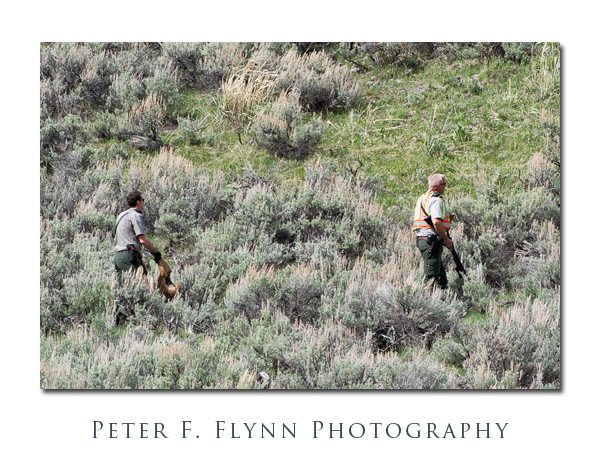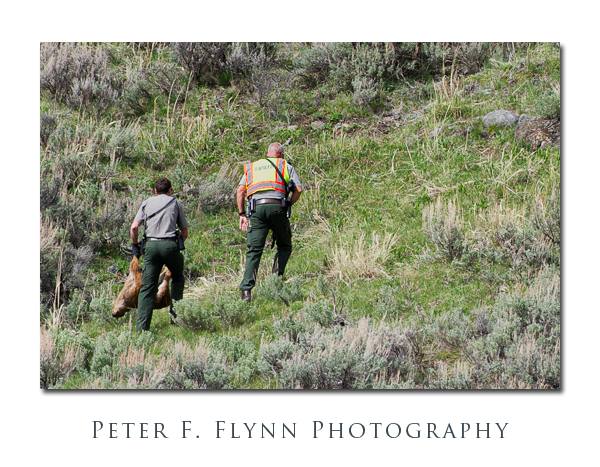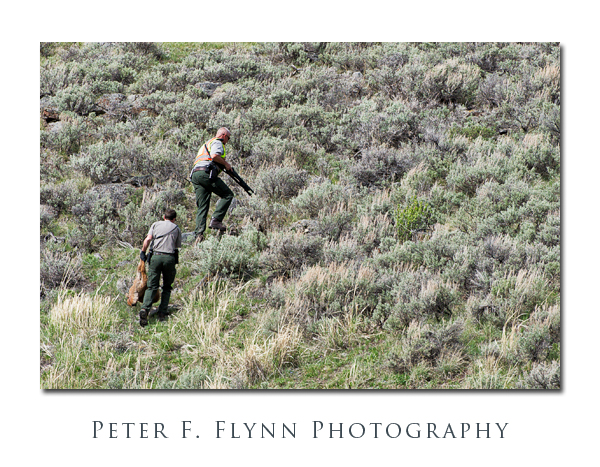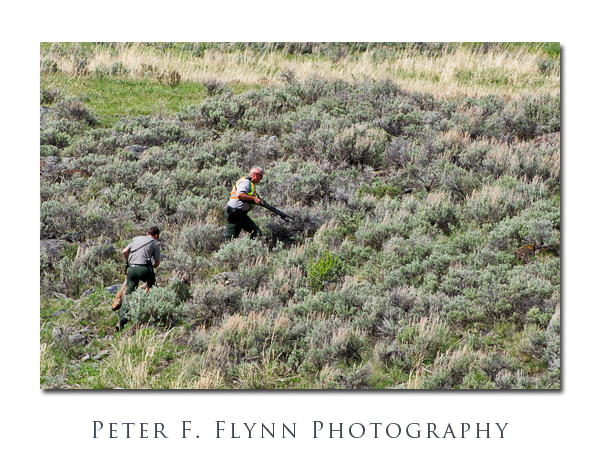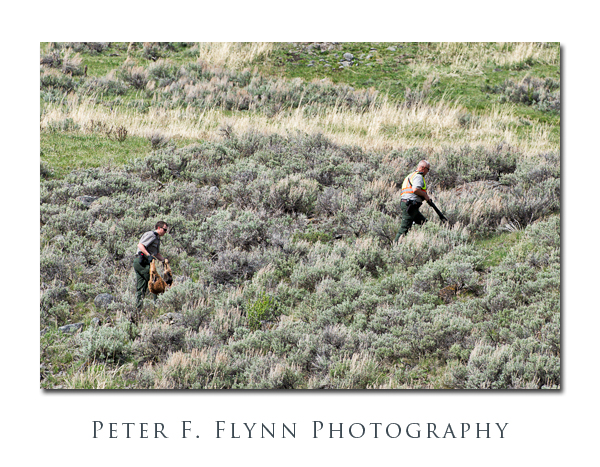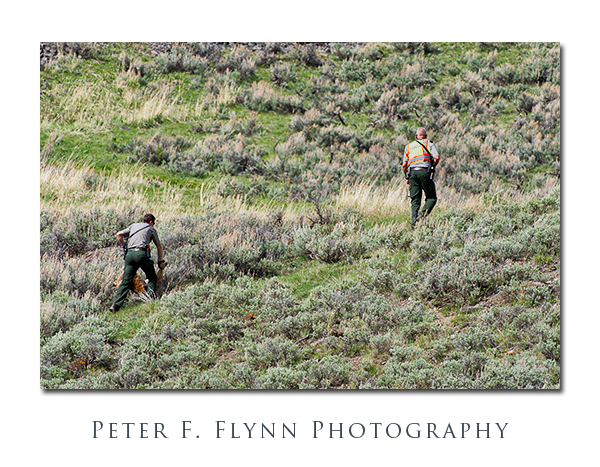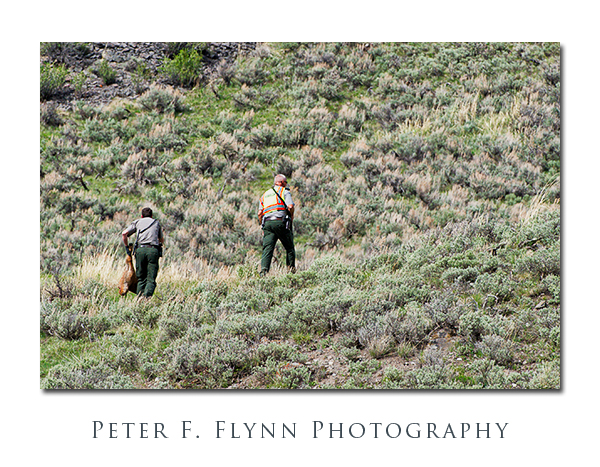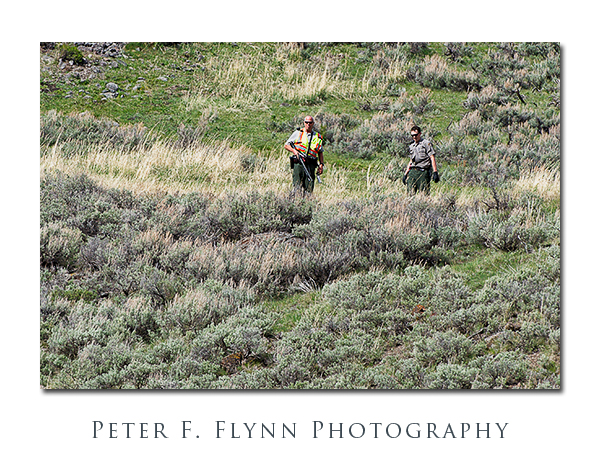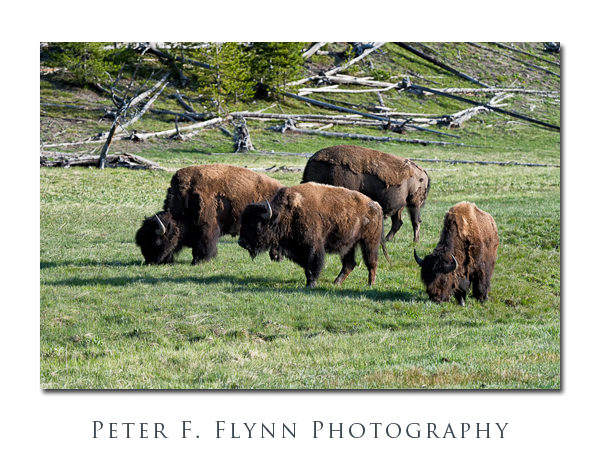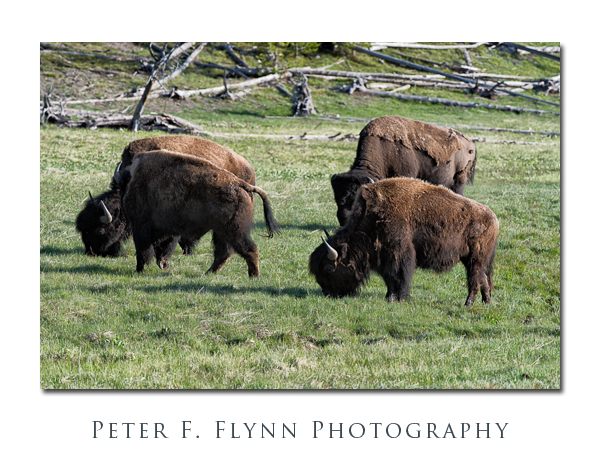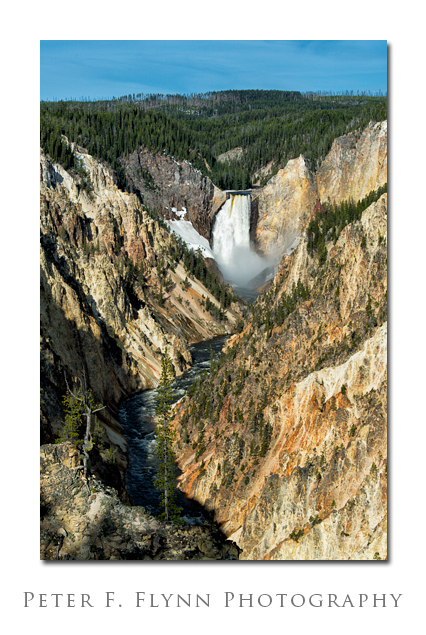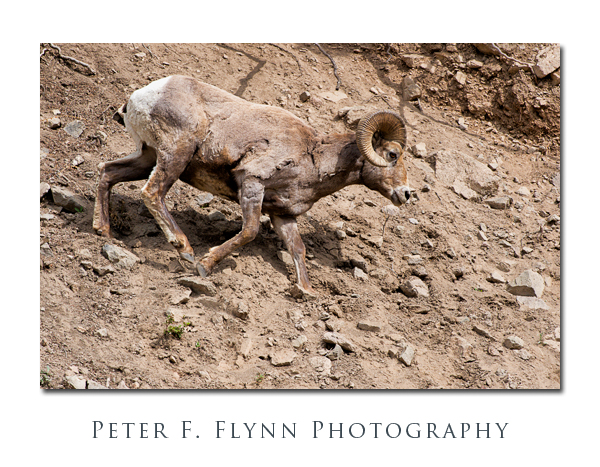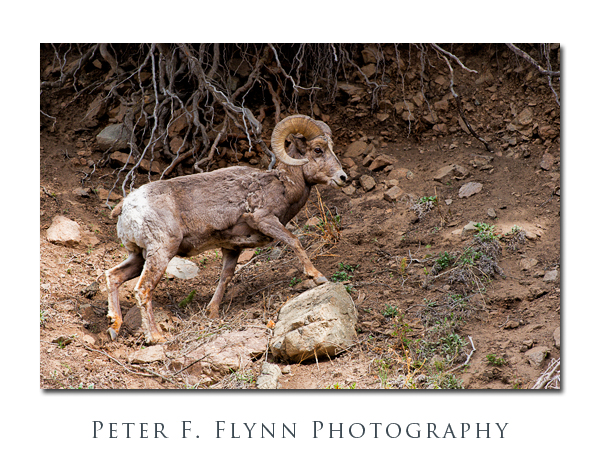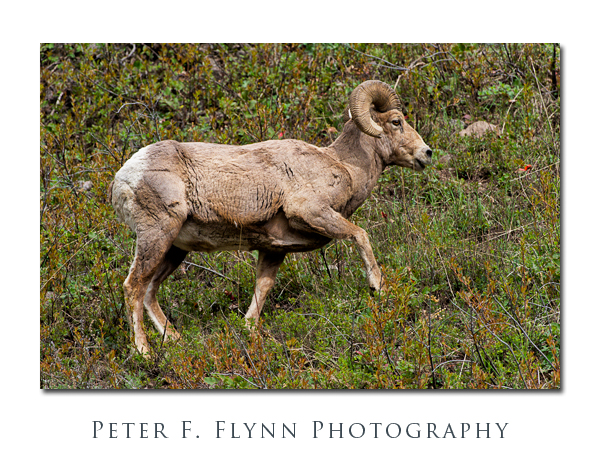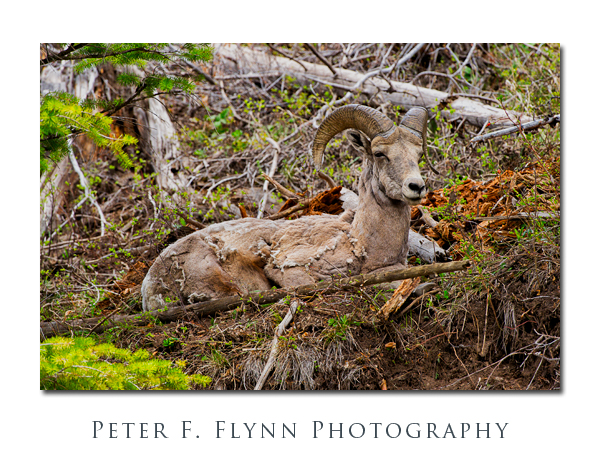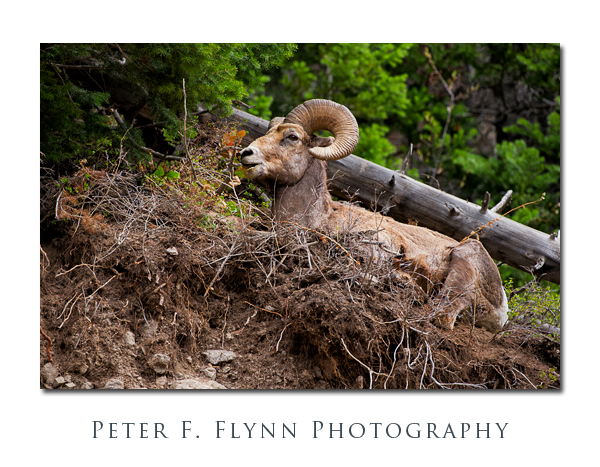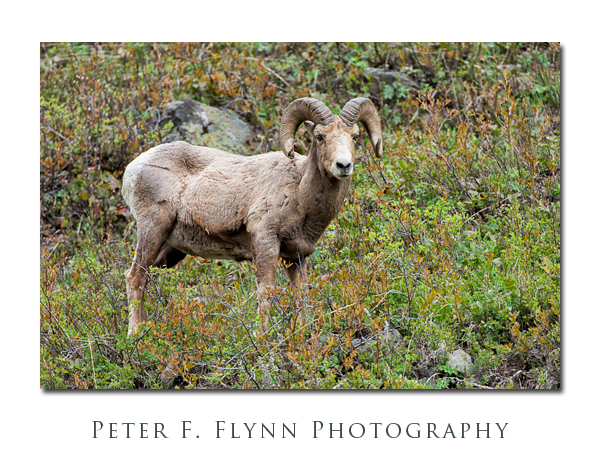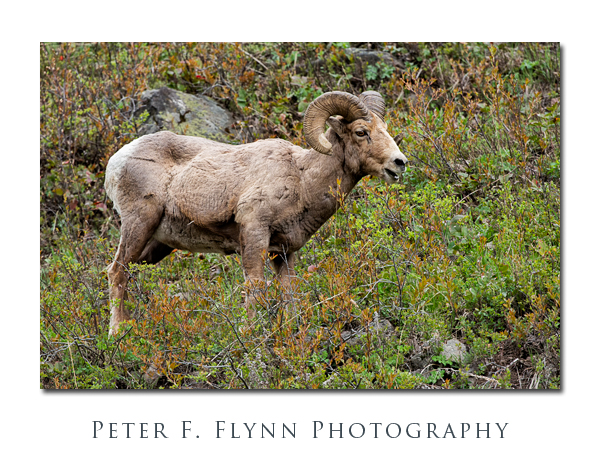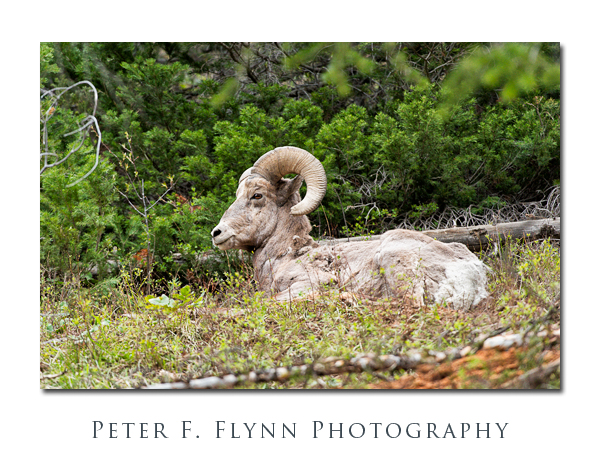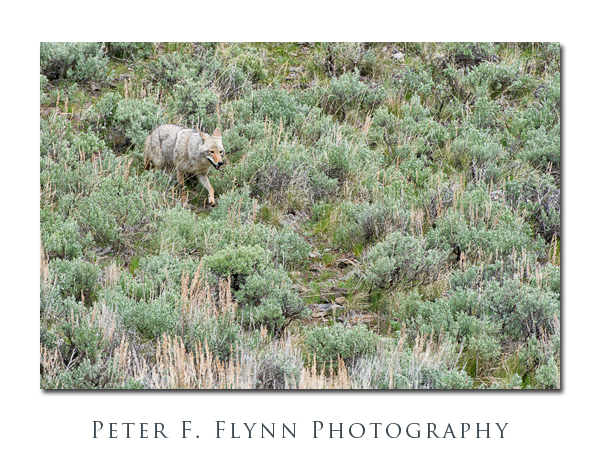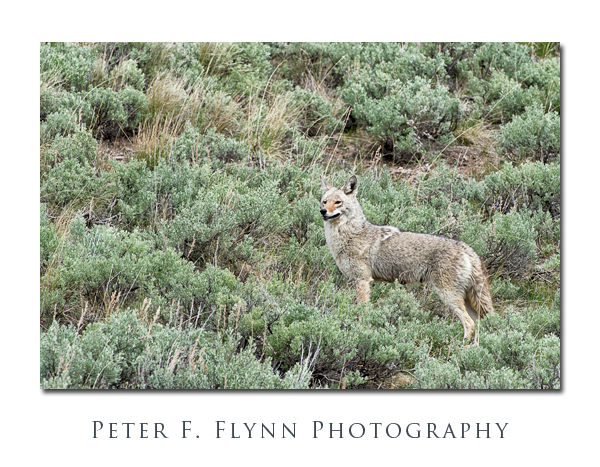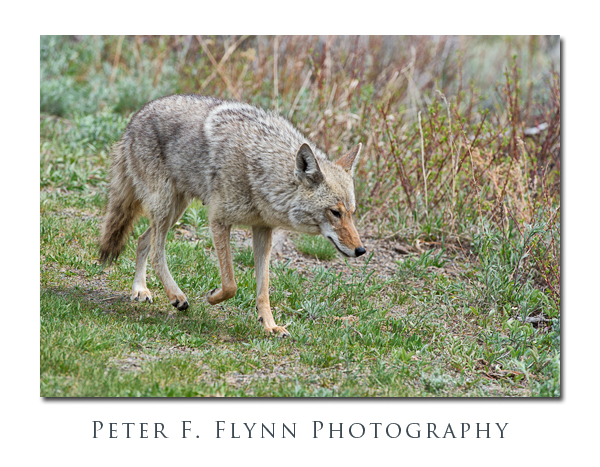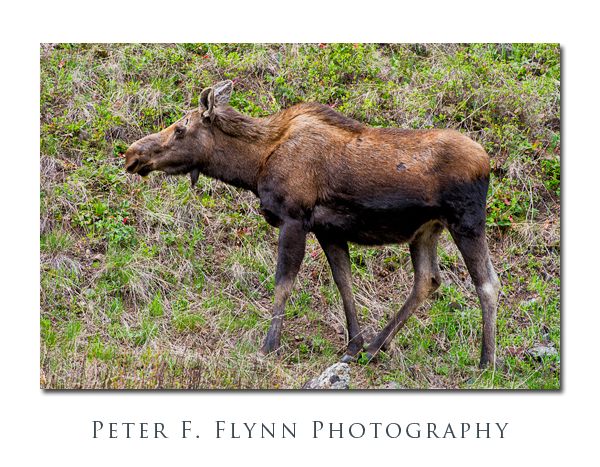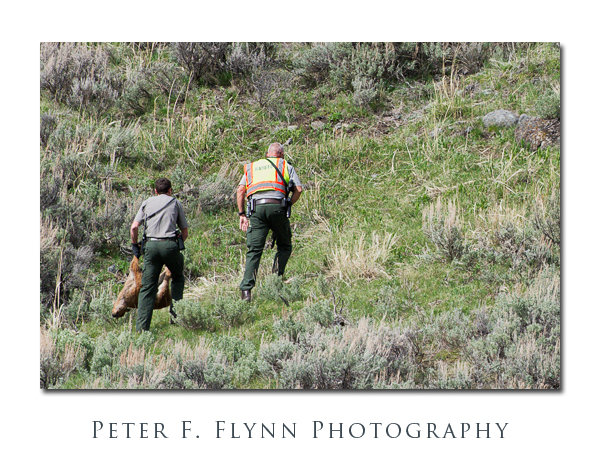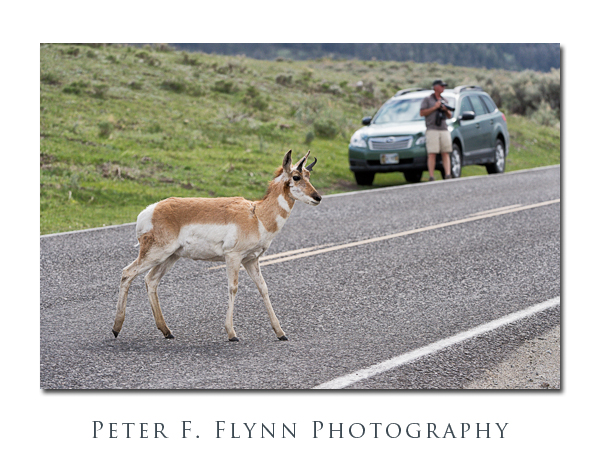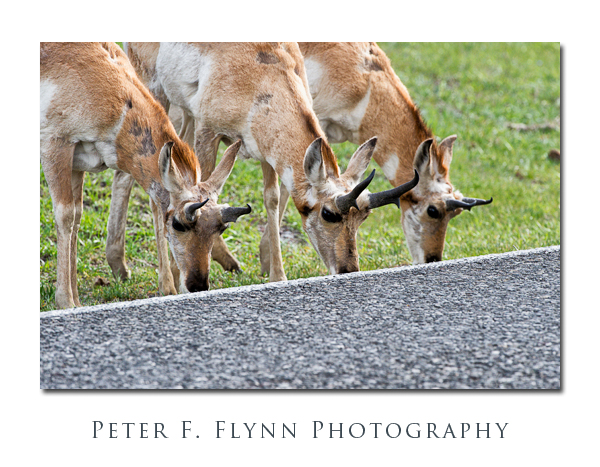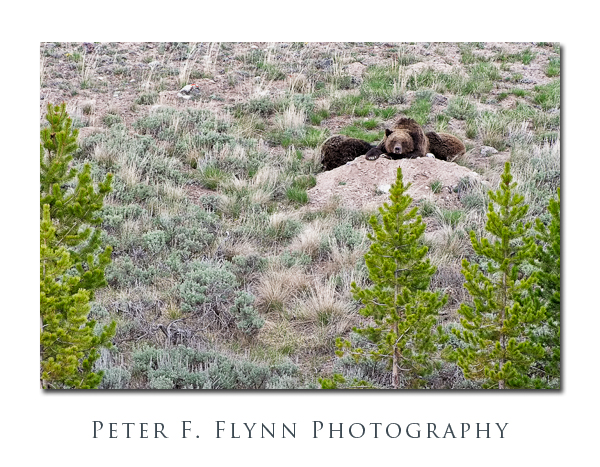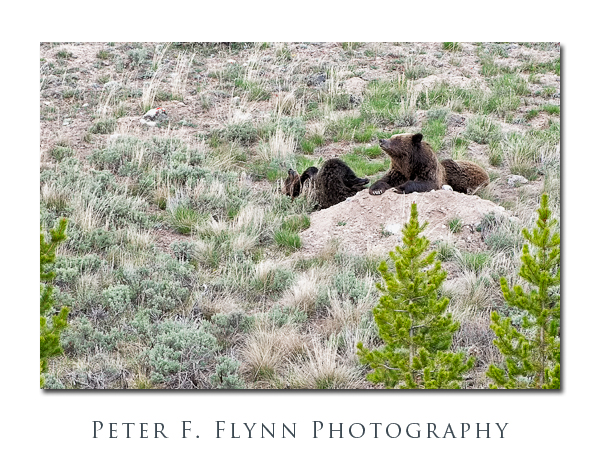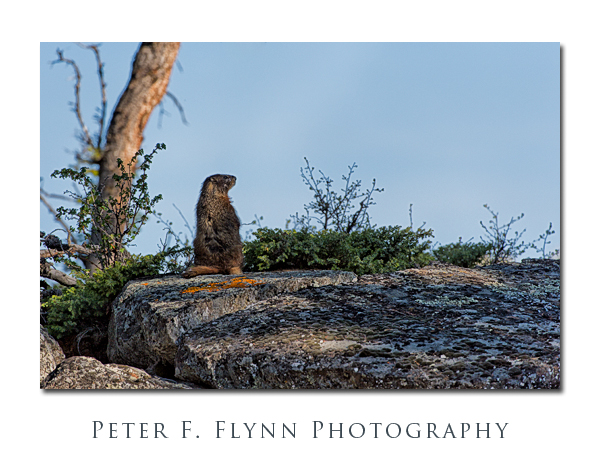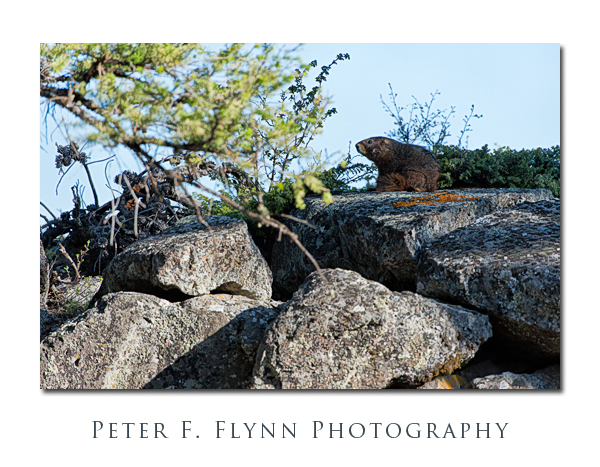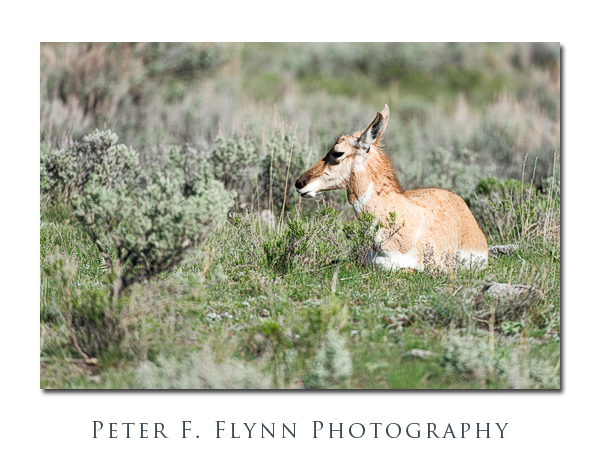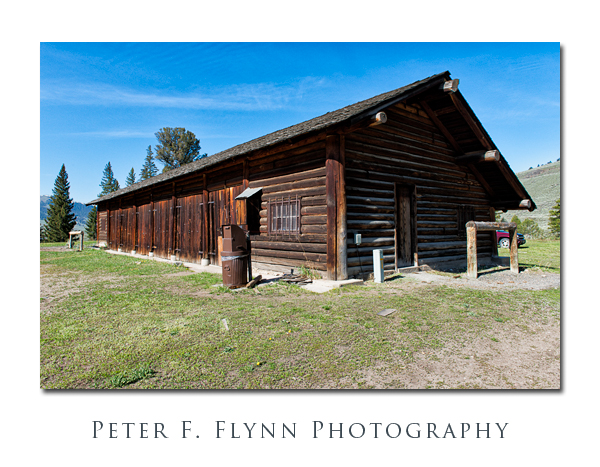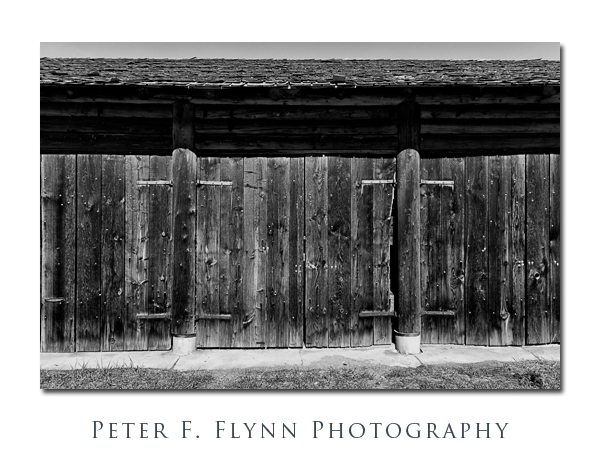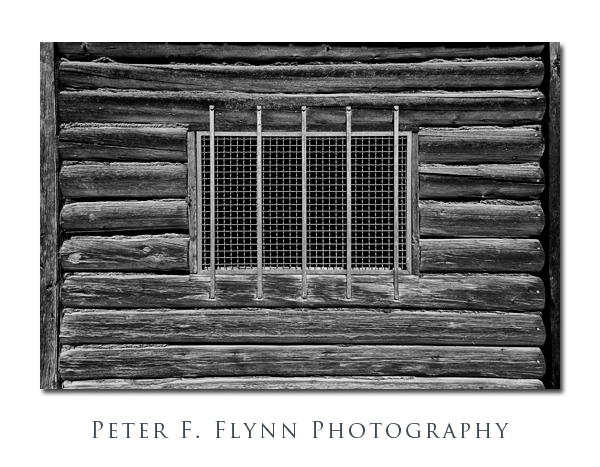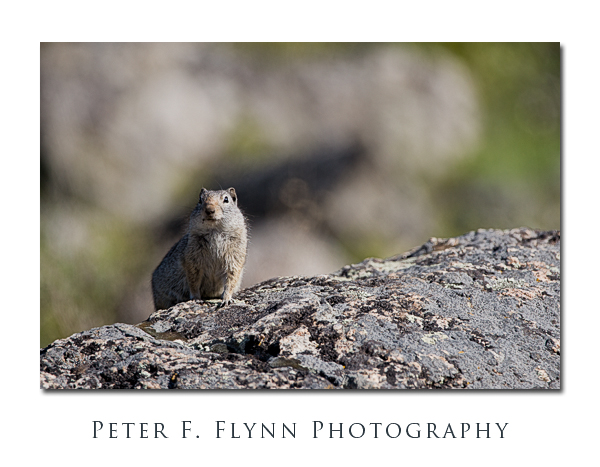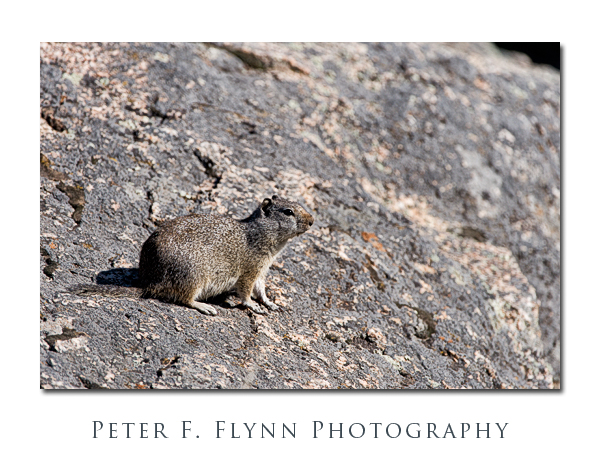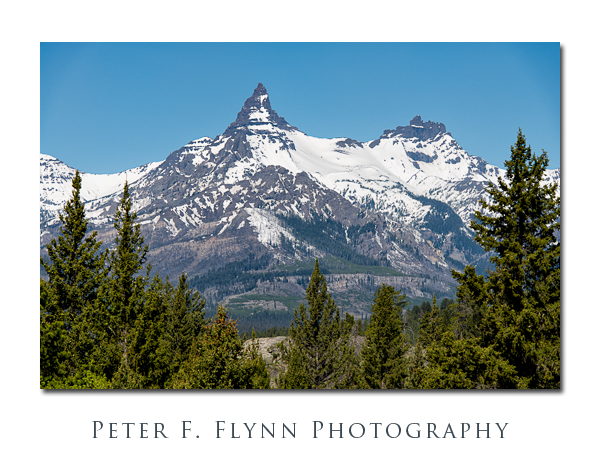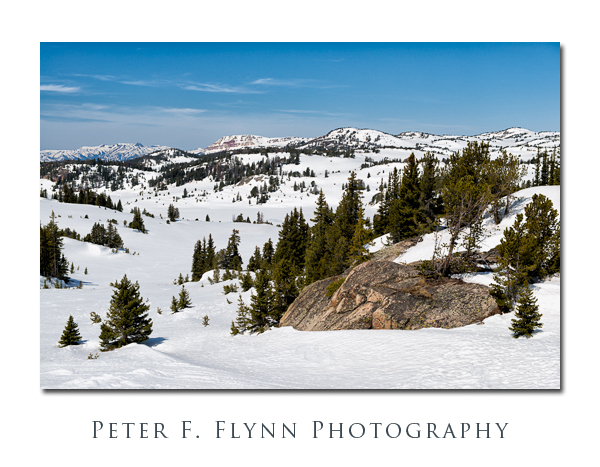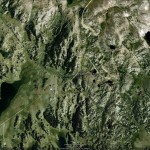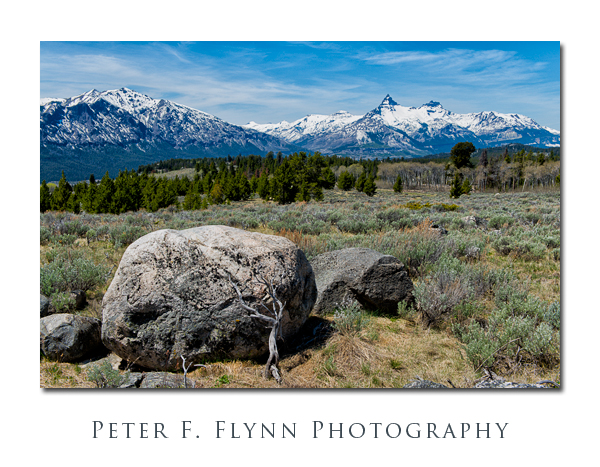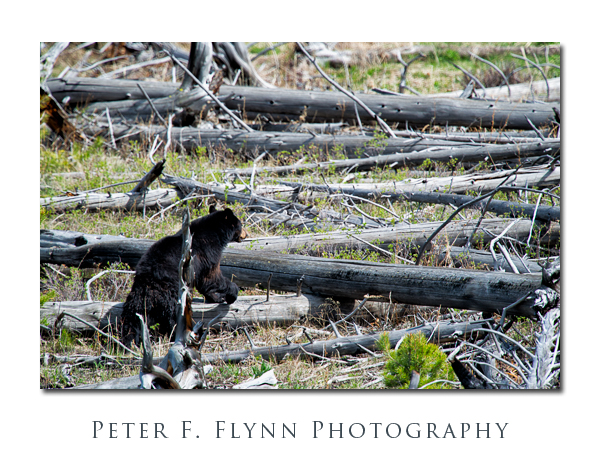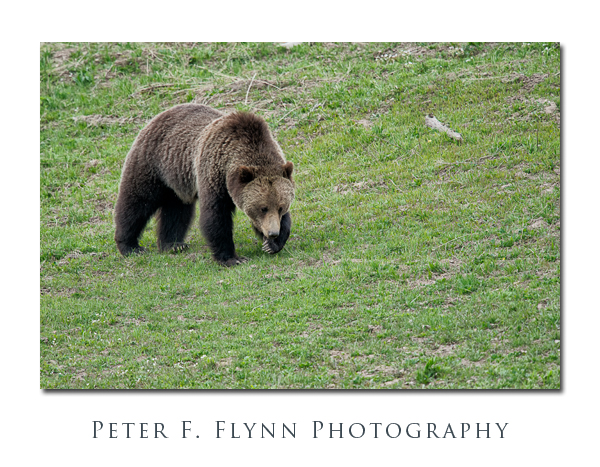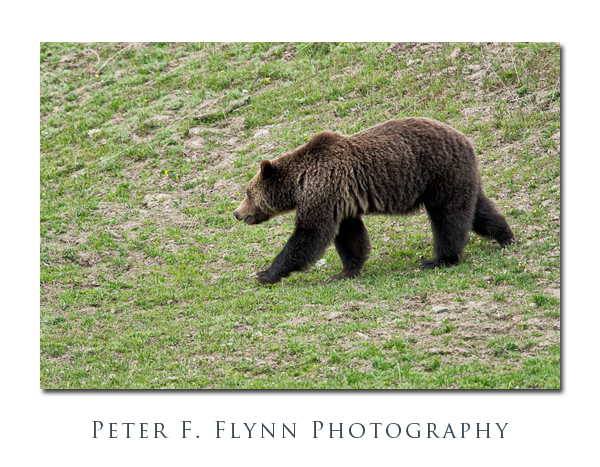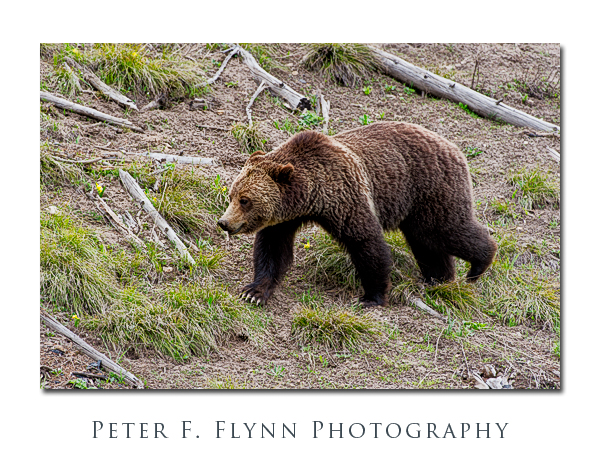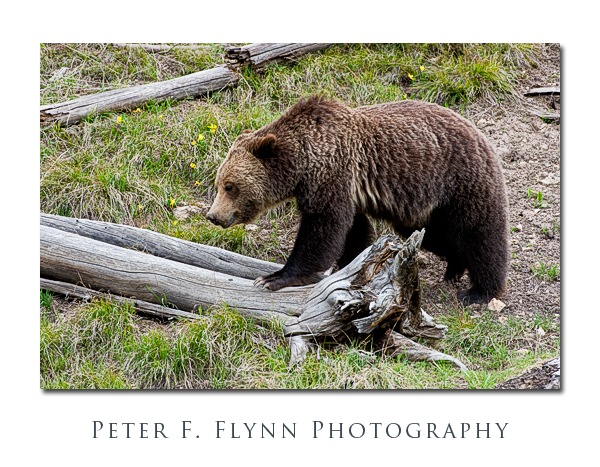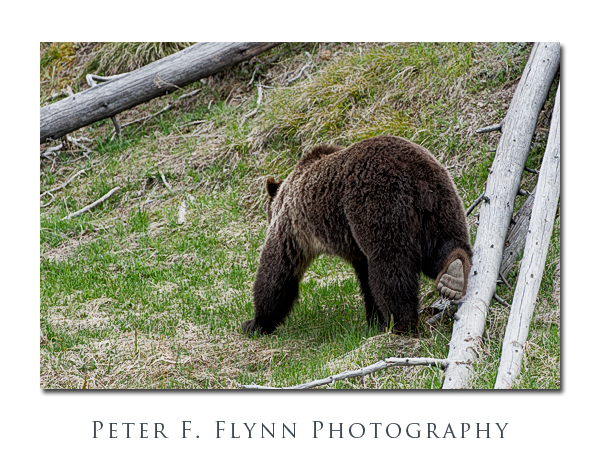Visitors to the National Parks will naturally associate Rangers with responsibilities most closely associated with their personal experience: Staffing NPS Ranger Stations and kiosks, leading tours of exhibits and nature walks, generally keeping people out of mischief, saying ‘No’ in a multitude of ways, etc.
There is another side though, duties held by a select few, which constitute the secret lives of NPS Rangers. Law enforcement is the bulk of this – sorting out drunk driving, public intoxication, physical violence, thievery, and the rest of sources and consequences of human suffering – it must indeed be quite odd to deal with conventional cop stuff in the midst of a vast and wild environment – but there is a call, and there are those who answer.
Documented in this entry is a rarely witnessed and potentially dangerous task: Relocation of an animal carcass – in this case a bison calf. There are thousands of animals in the park, and when one of these creatures dies, the body is, well, recycled- mostly quickly and efficiently, and almost always beyond the view of the visiting human population. But let’s imagine what might happen if an animal perished near one of the parks major roadways…
In fact the HP and myself don’t have to imagine, for we witnessed such an occurrence two years previously at the Blacktail Ponds – see the May 20, 2010 entry – bear fighting bear over the carcass, wolves fighting bears over the carcass, coyotes and ravens picking over the bones – a remarkable opportunity to witness the rougher edge of nature. Now you would have to have been there to really appreciate it, but let me assure you that the event must have been a challenge for the NPS staff: 50+ vehicles, over a hundred people, with grizzly bears and wolves trying to run one another off the carcass without regard to where the humans stood to observe.
Given the predictable mischief resulting from the carcass recycling process then, it may not be surprising to learn that NPS Rangers routinely relocate carcasses, placing as much distance between the dead animal and nearby roadways and/or viewpoints as can be reasonably achieved. Again, this is extremely dangerous work – carrying a dead bison calf in the vicinity of a grizzly bear is right-up-there-crazy with strolling around the backcountry with a cutthroat-necktie or an elk-steak-hat.
You will note that this is a two-person operation. One ranger leads the way into the brush – armed with a shotgun and sidearm, and if it were me, loaded with the bear country standards, respectively, 12 Ga 2-3/4″ 000 buck, and 45 ACP +P 230Gr JHP, but I digress. A second ranger follows behind, toting the carcass.
The carcass was originally located just a few meters north of the Northeast Entrance Road, near the northern end of the Lamar Valley. The transfer took only about three minutes, and involved moving the carcass about 100 meters northwest of the road up hill to a flat section that was invisible from the road.
Images in this entry were recorded on May 16, 2012 at 16:40 MDT using the Nikon D4 and the AF-S NIKKOR 200-400mm f/4G ED VR II at 400mm. Exposure was f/8.0 and 1/2500s, ISO 1600. The use of f/8.0 was unnecessary – f/5.6 would have been better – but I was caught a bit off guard and decided to just keep shooting. All of these images are extreme crops of the original source images.
Kudos to these unnamed NPS Rangers, who conducted their duties with professionalism, discretion, and respect for the natural order.
Copyright 2012 Peter F. Flynn. No usage permitted without prior written consent. All rights reserved.
